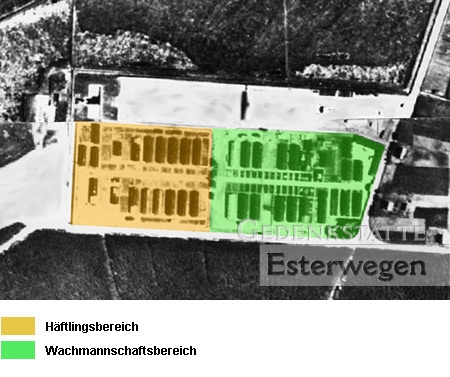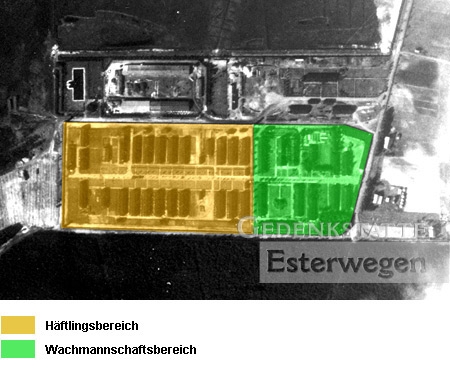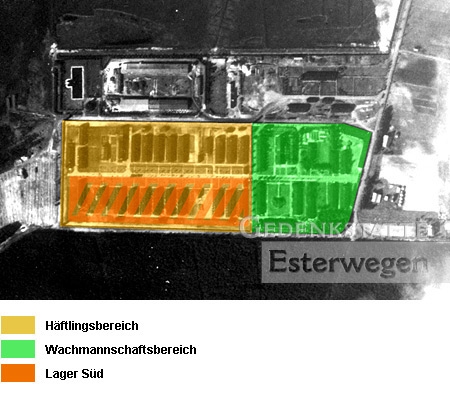Camp Esterwegen
Esterwegen concentration and penal camp
1933/34 Esterwegen as a state-run concentration camp
In the (early) summer of 1933, Börgermoor and Esterwegen became the first concentration camps in the German Reich to be planned and built entirely from scratch as sample barrack camps by the Prussian state, with Neusustrum following in September. The concentration camp was built as a double camp for 2,000 prisoners between June and August 1933. Due to massive harassment and numerous cases of murder, the prisoners soon began to speak of the “hell at the edge of the forest”. Mainly political prisoners were held there in “protective custody”.
1934-1936 Esterwegen as an SS concentration camp
In April 1934, the concentration camps in Börgermoor and Neusustrum were converted into prison camps under Prussian judicial administration. Esterwegen remained a concentration camp and was placed under the control of the SS by Himmler. The two double camps were merged and a 2.50 metre high white outer wall was built. The prisoners‘ camp was designed for 1,000 prisoners, while the guards’ camp was greatly developed in the following years. North of the camp were sports facilities, a swimming pool and the tracks of the ‘Moorbahn’ railway. The prisoners comprised political prisoners as well as others persecuted by the Nazi regime.
1937-1945 Esterwegen as a penal camp
In spring 1936, the decision was made to dissolve the Esterwegen concentration camp as of 23 September 1936 and to relocate the prisoners to Oranienburg near Berlin, where they were used in the construction of the new Sachsenhausen concentration camp. The Reich Ministry of Justice took over the camp in January 1937. It was incorporated into the eventual 15 prison camps in Emsland under SA supervision as ‘Penal Camp VII’. The takeover of the camp had far-reaching architectural consequences. The old inner gate was removed, the prisoner area was expanded and a new inner gate was installed in another location.
The prisoners were generally incarcerated for political, social-racist and criminal reasons, and from 1939 onwards many prisoners convicted by Wehrmacht courts were held in Esterwegen.
1943/44 Esterwegen ‘Camp South’ as a NN camp
From May 1943 to April 1944, under strict secrecy and strict segregation, initially 1,800 and at times up to 2,700 ‘Nacht und Nebel’ (‘Night and fog’) prisoners (resistance fighters from Western Europe) were incarcerated in the southern section, the so-called ‘Camp South’. The prisoners were completely isolated and were not allowed to have any form of contact with the outside world.
Short guided tours:
Every 1st Sunday of the month, at 11am and 3pm. Please contact us in advance for a tour in English.








